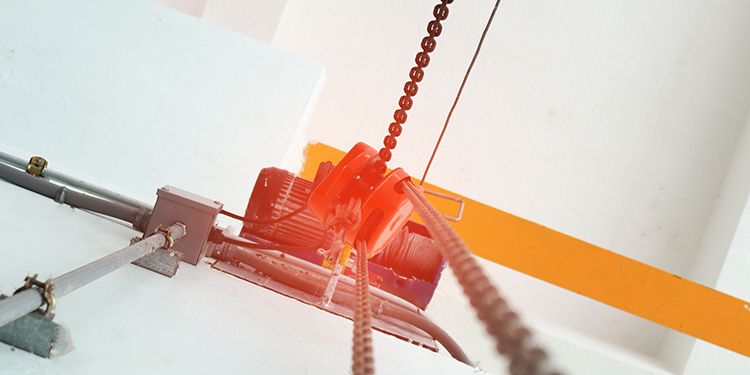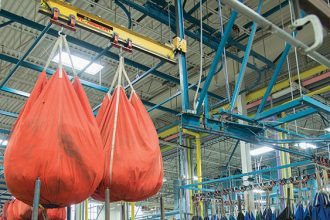
Every technical paper produced by the members of the Hoist Manufacturers Institute (HMI) cautions hoist owners and operators against performing a side pull. The movement is defined by the group as “any force or operating condition that restricts the load block, chain, wire rope, or web strap, and hoist body from forming a straight line with the direction of loading.”
Further, HMI’s Hoist Operator’s Manual (HMI100.23), which details the responsibilities and duties of operators of manual, electric, and air powered hoists — as well as the Operator’s Manual specific to Lever Hoists (HMI100.75) — states the following:
The hoist should be brought directly over the load before rigging the load to the hoist load hook. Failure to center the hoist over the load could cause the load to swing when it is lifted or could cause side pulls or other forces to be transferred into the crane.
Why would side-pulling be considered dangerous? There are several reasons:
- Risk of injury to personnel. A side pull increases the risk that a load not centered under the hoist will swing out of control and possibly strike the operator (or other nearby personnel), potentially causing injury or death.
- Possible damage to operations. The swinging of a side pulled load could impact equipment or a facility structure, creating significant and costly damage.
- Hoist damage. Every time a hoist is attached to a load that is not centered directly underneath it and a side pull occurs, excessive stress is put on the hoist and its components, including the hook, chain or wire rope, load block, pocket wheel, reeving and gears. This contributes to premature wear of the hoist, shortening its service life and increasing the risk of a catastrophic failure.
- Trolley damage. A side pull will cause damage the trolley, as the off-center forces will cause it to tip to one side or the other, becoming unbalanced and exerting significant force against the wheels that remain on the bridge beam. Trolleys are designed to support weight evenly across their wheels; an unbalanced, side-pulled load will lead to premature wear and deformation of the unit. Depending on the angle at which the hoist is side pulled, the entire trolley can be pulled off the beam and crash to the ground, potentially injuring personnel or damaging equipment and facility structures.
- Cumulative equipment damage. A side pull can cause damage to the overhead lifting equipment immediately, or — if allowed to occur repeatedly — can cumulatively weaken the hoist and trolley, leading to a catastrophic failure.
Finally, if the risks of injury, death, and damage aren’t enough to dissuade an operation from permitting side pulls, they are strictly forbidden by the Occupational Health and Safety Administration in the OSHA 1910.179 Standard for Overhead and Gantry Cranes. The standard states:
[1910.179(n)(3)(ii)] Before starting to hoist the following conditions shall be noted:
[1910.179(n)(3)(iv)] Cranes shall not be used for side pulls except when specifically authorized by a responsible person who has determined that the stability of the crane is not thereby endangered and that various parts of the crane will not be overstressed.
Operations that disregard these regulations open themselves up to the possibility of committing a willful OSHA violation and corresponding fines should an employee get hurt.
Notably, there are multiple, safe options for positioning a load under a hoist that don’t involve a side pull. Winches or below-the-hook devices can be utilized, depending on the application and the type of load. Best practice is to engage with an overhead lifting solutions provider to discuss the options.
Finally, it’s important to train operators not to attempt a side pull. In addition to initial safety training, regularly repeating the training to remind operators how to properly operate the equipment is recommended. To help with this process, HMI also offers three additional documents detailing the “shalls and shall nots” of hoist operation. Published in English, French, and Spanish, these Recommended Practices provide clear warnings and cautions for operators based on the severity of the potential hazards. These documents cover:
Many of the included warnings and operating practices are sourced from the American National Standard ASME B30.21 and are intended to avoid unsafe hoisting practices — such as side-pulling — which might lead to personal injury or property damage.
Seeking additional information on the safe operation of hoist systems? The members of the Hoist Manufacturers Institute (HMI) offer a variety of resources — including a comprehensive library of product guides; a hoist certification program; OSHA Alliance safety tip sheets, fact sheets and quick cards — via its website at www.MHI.org/hmi.



